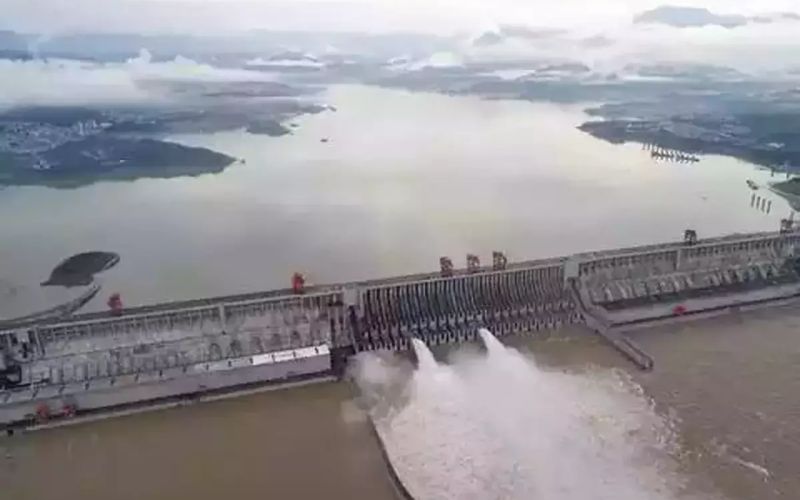
Source: Geneva Daily
According to The Geneva Daily, China is building a massive dam on the Mabuja Zambo River, just a few kilometres north of the India-Nepal border, to use as a weapon of war. Water wars are conflicts between countries, states, or groups over water resources, in which water can be a source of contention or even used as a weapon of war.
Furthermore, China intends to construct an airport near this dam to aid Chinese Air Force movement.
With the occupation of Tibet, China has become the country with the most river to acquire and utilise. However, by polluting the river, building dams, and degrading the environment, Beijing can cause tensions in the near future and gain complete control over the water in the area, according to the Geneva Daily.
Notably, the Brahmaputra River, also known as the "Yarlung Tsangpo," originates in Tibet's Chemayungdung glacier and flows into three densely populated countries: China, India, and Bangladesh.
According to government sources, China intends to build 20 dams to generate 60,000 MW at Yarlung Zambo (Brahmaputra) in Medog, near the border with Arunachal Pradesh, ostensibly to meet China's carbon neutrality goal by 2060, according to the Geneva Daily.
The China Yangtze Power Company (CYPC) proposed constructing a massive tunnel beneath the ridge that separates the two arms of the Big Bend that would divert 50 billion cubic metres of water per year to the south-eastern slope, where it would cascade over nine cascading hydropower dams to generate 40,000 MW of peak power.
This has harmed the underground converging belts, potentially leading to earthquakes. According to The Geneva Daily, experts predict that it will have a negative impact on the lower riparian states, particularly India, including environmental consequences and the creation of artificial floods.
Water diversion may once again put a strain on India's agricultural needs in the northeast, and mismanagement may result in overflows and floods in India. It may also have an adverse effect on the food security and livelihood of people living across the river. Experts have warned that dam construction could cause the river to lose silt, reducing agricultural productivity.
China agreed to a Memorandum of Understanding (MoU) with India and Bangladesh to share hydrological data from three upstream monitoring stations on the Brahmaputra River in Tibet during each monsoon season from May 15 to October 15. While China sells hydrological data, India gives it away for free to its neighbours, according to The Geneva Daily.
Beijing, on the other hand, has ceased providing hydrological data to India since the 2017 China-India border standoff, also known as the Doklam issue, over China's construction of a route in Doklam, adjacent to the Donglang tri-junction boundary.
This hydrological data is critical for the Indian side in order to predict or prepare for floods and mitigate flood damage.
Although Beijing claimed that the alleged lack of data sharing with India was due to renovation, the same data has consistently been provided to Bangladesh at no cost. Beijing is clearly weaponizing the Brahmaputra River by undermining the Indian state's overall establishment.
Military experts in New Delhi have stressed what they see as the significant security implications of a disputed giant dam near the Indian border, as the Chinese attempt to link water issues with broader border disputes in order to put pressure on India, reported The Geneva Daily.
Edited and collated by Team TRC